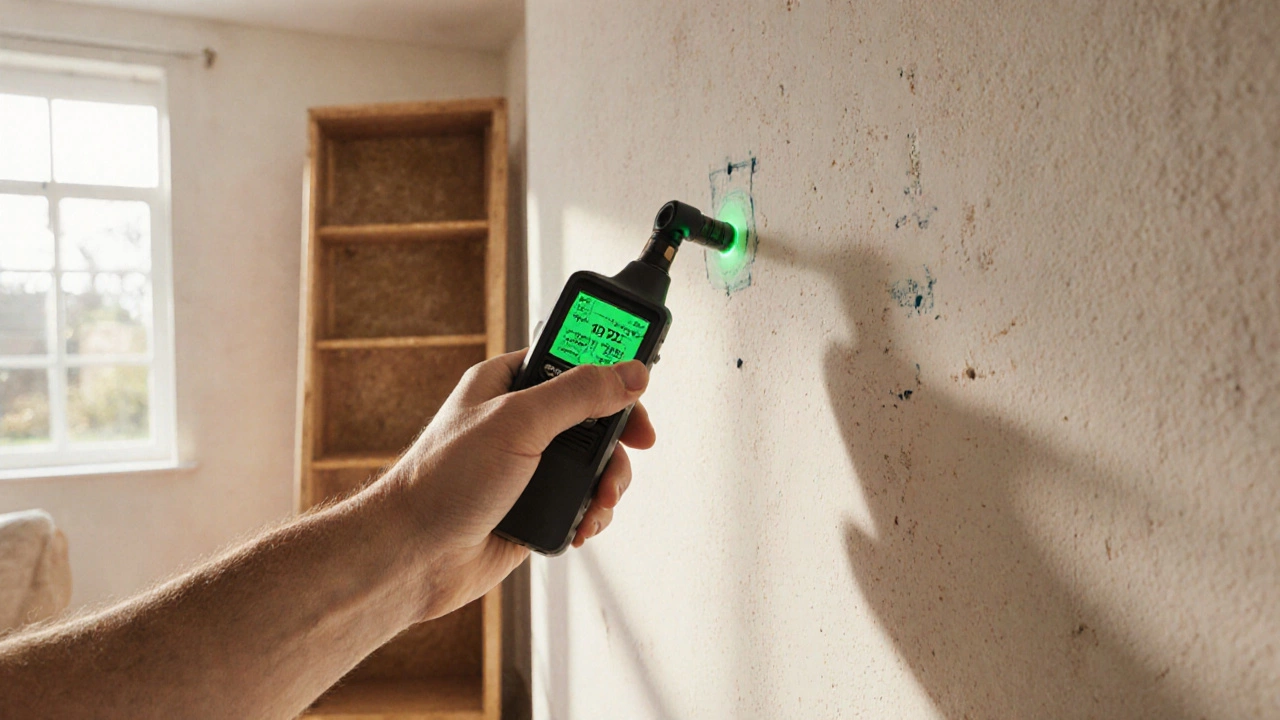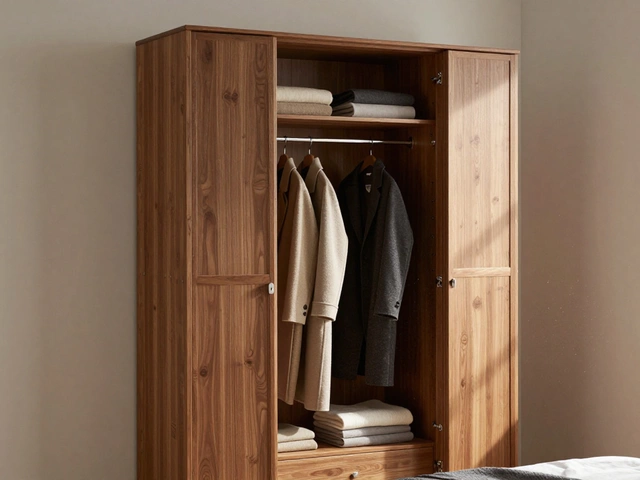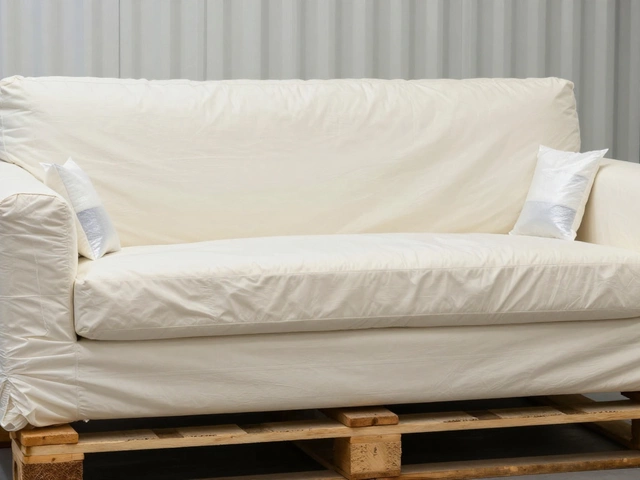Bookcase Anchor Selector Calculator
Choose Your Bookcase & Wall Type
Enter your bookcase details and wall type to get recommended anchor types and quantities.
Enter your bookcase details and click "Calculate Recommended Anchors" to see recommendations.
Quick Takeaways
- Identify your wall type before buying any anchor.
- Heavier bookcases need toggle bolts or concrete wedge anchors; light units can use simple drywall anchors.
- Always anchor into a stud whenever possible for maximum safety.
- Check the load rating of the anchor and match it to your bookcase’s weight.
- Follow the step‑by‑step guide to avoid stripping screws or damaging the wall.
When securing a heavy piece of furniture, Bookcase anchor is a hardware device designed to fasten a bookcase to a wall, distributing load and preventing tipping. The right anchor can be the difference between a sturdy showcase and a wobbly hazard. Below we break down every factor you need to know, compare the most common anchor types, and walk you through a fool‑proof installation.
Why an Anchor Matters
Most people think a bookcase only needs floor friction to stay put, but once you load it with encyclopedias, décor, or a television, the top can act like a lever. In a mild earthquake or an accidental bump, that lever can tip the whole unit. An anchor transfers the pulling force from the top of the bookcase into the wall studs or masonry, keeping the piece upright and protecting your family.
Common Anchor Types
Here are the five anchor families you’ll encounter in hardware stores. Each has a sweet spot based on wall material, load, and installation skill.
- Drywall anchor is a plastic or metal sleeve that expands behind thin drywall when a screw is tightened. Ideal for light loads (under 20 lb) on plasterboard.
- Toggle bolt is a spring‑loaded wing that flips open behind drywall, offering a larger bearing surface. Handles 30-100 lb depending on size.
- Molly bolt is a metal sleeve that expands into a mushroom shape inside the wall cavity. Good for medium loads (20-50 lb) in hollow walls.
- Concrete wedge anchor is a hardened steel rod with a conical end that wedges into drilled masonry. Best for brick, concrete, or stone walls, supporting 150 lb or more.
- Stud finder is an electronic device that detects wooden or metal studs behind drywall. Not an anchor itself, but essential for locating the strongest fixing point.
| Anchor Type | Best Wall Material | Typical Load Capacity | Installation Ease |
|---|---|---|---|
| Drywall anchor | Gypsum board | Up to 20 lb | Very easy |
| Toggle bolt | Drywall, plaster | 30-100 lb | Easy (needs larger hole) |
| Molly bolt | Hollow wall | 20-50 lb | Moderate |
| Concrete wedge anchor | Concrete, brick, stone | 150 lb+ | Hard (drill & hammer) |
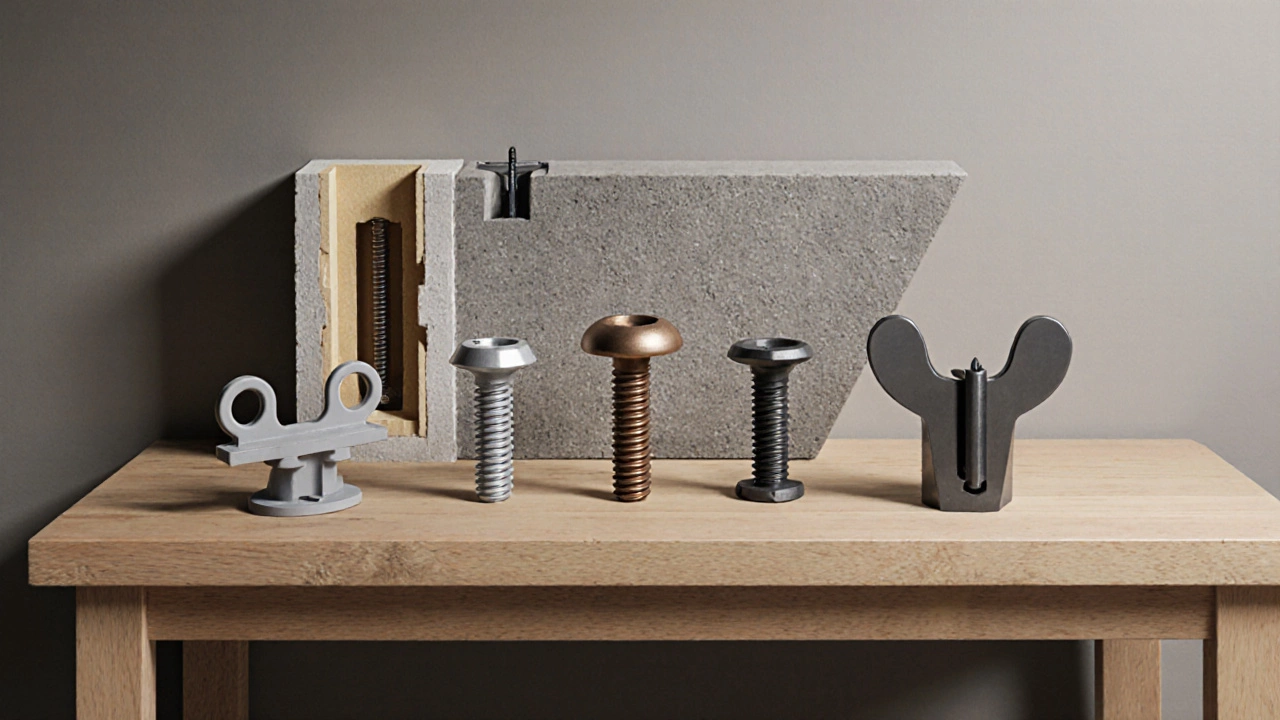
How to Choose the Right Anchor
Follow these decision points to land on the best anchor for your specific set‑up.
- Identify the wall type. Use a Stud finder to locate studs; if you hit solid masonry, you’ll need a wedge anchor.
- Calculate the bookcase’s total load. Add the weight of the unit itself plus the heaviest books you plan to store. Load rating is the maximum weight an anchor can safely support. Choose an anchor with a rating at least 1.5× your calculated load.
- Determine anchor spacing. Most manufacturers recommend placing an anchor every 24-30 in. for tall units and every 16-20 in. for shorter, wider shelves.
- Consider installation tools. If you lack a hammer drill, avoid concrete wedge anchors. Plastic drywall anchors need only a screwdriver.
- Check for existing hardware. Some bookcases come with pre‑drilled holes that match standard Shelf bracket dimensions. Align your anchor choice with those holes to save time.
Step‑by‑Step Installation Guide
- Gather tools: drill with appropriate bits, screwdriver, level, stud finder, pencil, and the chosen anchors.
- Mark the anchor locations on the wall. Use a level to ensure the top edge of the bookcase will be perfectly horizontal.
- If a stud is located at a marked spot, drill a pilot hole 1/4" smaller than the screw diameter and drive a wood screw directly into the stud.
- When no stud is present, select the anchor type matching the wall material:
- For drywall, drill a hole matching the anchor’s diameter, insert the Drywall anchor, and tap it flush.
- For hollow walls, drill the hole, insert a Molly bolt, then tighten the screw to expand the sleeve.
- For solid masonry, drill a deep hole with a masonry bit, clean the dust, insert a Concrete wedge anchor, and hammer it until the head is flush.
- Attach the bookcase to the installed anchors using the pre‑drilled holes or the brackets that came with the unit. Tighten each screw until snug but avoid over‑torquing, which can strip the anchor.
- Give the unit a gentle shake to confirm stability. If there’s any movement, double‑check anchor depth and re‑tighten.
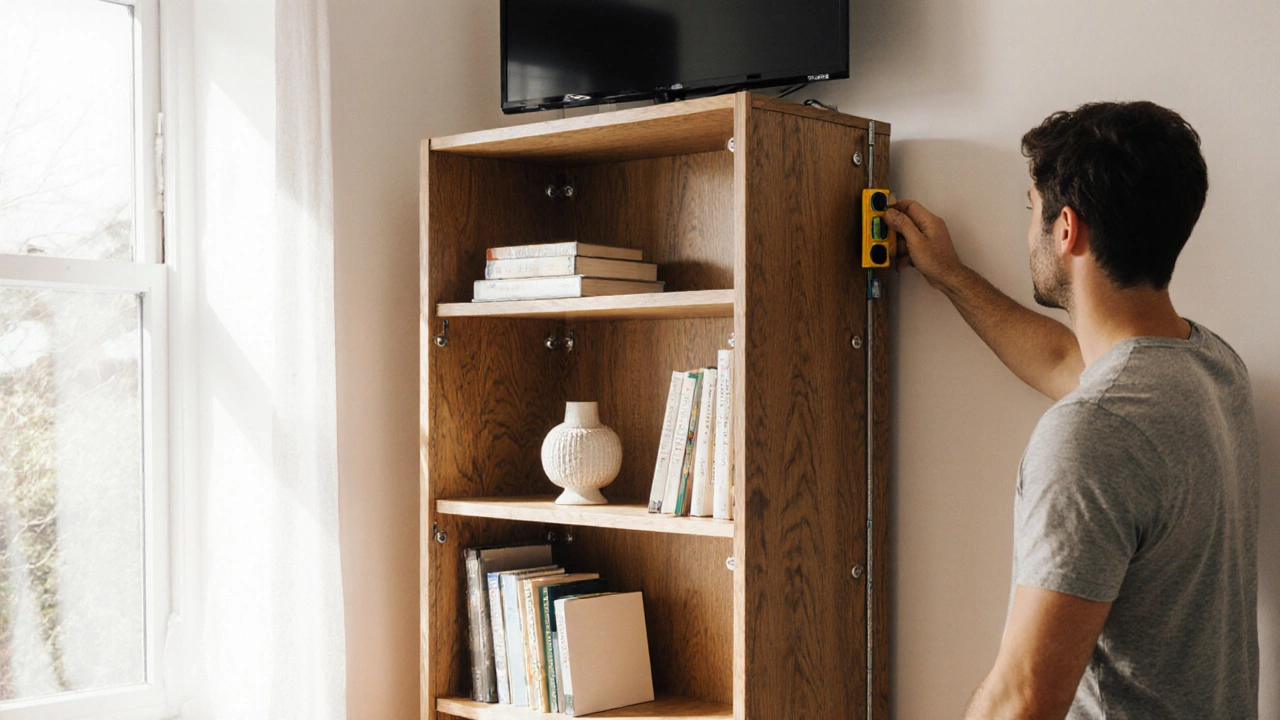
Common Mistakes & Pro Tips
- Skipping the stud finder. Anchoring solely into drywall can be risky for anything over 30 lb.
- Undersizing the anchor. A 1/8" anchor in a 1/4" hole will spin loose under load.
- Ignoring load rating. Choose an anchor rated at least 50 % higher than your calculated load.
- Forgetting to pre‑drill. Hammer‑driving screws into raw drywall or masonry can shatter the material.
- Pro tip: Use a shim. If the wall isn’t perfectly flat, insert a thin wooden shim between the back of the bookcase and the wall before tightening the anchors. This distributes pressure evenly and prevents cracks.
Maintenance and Inspection
Even the best‑installed anchor can loosen over time due to vibration or humidity changes. Perform a quick check every six months:
- Pull gently on the top of the bookcase; it should feel solid.
- Inspect each screw head for any sign of loosening or stripping.
- Use a flashlight to look inside the anchor cavity (if visible) for cracks.
- If any anchor feels loose, remove the screw, replace the anchor with a fresh one of equal or higher rating, and re‑tighten.
Frequently Asked Questions
Can I use a regular wood screw instead of a specialized anchor?
A regular wood screw works only if you’re fastening directly into a stud. In drywall or masonry you need a purpose‑built anchor to spread the load and prevent the screw from pulling out.
What if my wall is a mix of drywall and concrete?
Locate the studs in the drywall sections and use wood screws there. For the concrete sections, drill and install concrete wedge anchors. Mixing methods gives you the safest result.
Do I need a stud finder for brick walls?
No. Brick and concrete are solid throughout, so you can drill directly for a wedge anchor. A stud finder is only useful for locating wooden or metal framing behind drywall.
How many anchors should I use on a tall bookcase?
Place anchors at the top, middle, and bottom - at least three points. If the unit is wider than 48 in., add a fourth anchor near the opposite side for extra stability.
Is there a risk of damaging the wall paint when installing anchors?
If you drill carefully and use the right bit size, paint damage is minimal. Use painter’s tape over the drill spot to catch drips and keep the surface clean.

